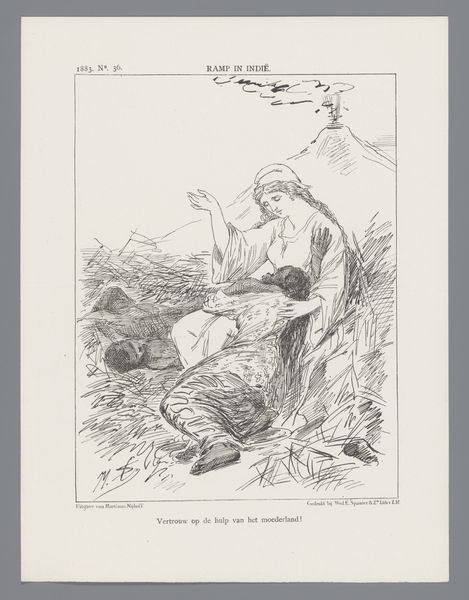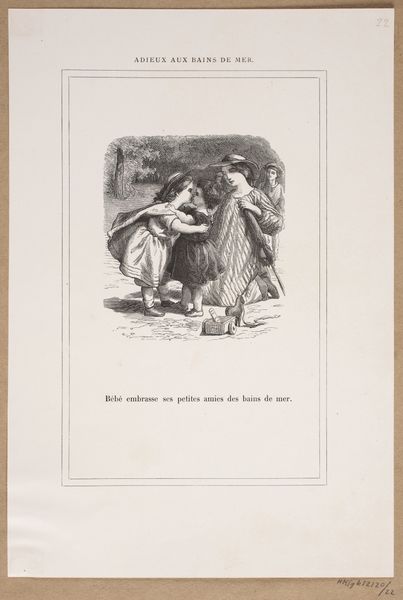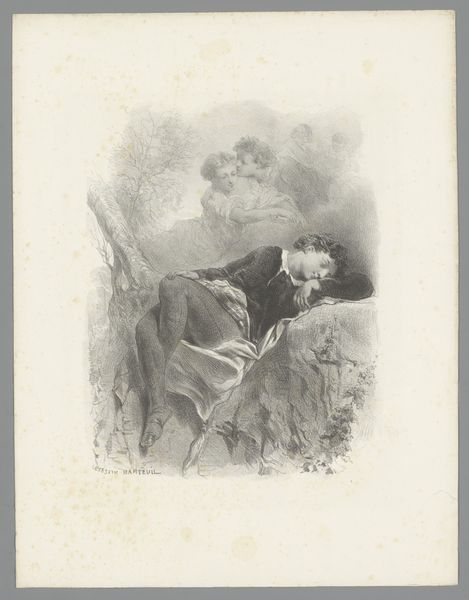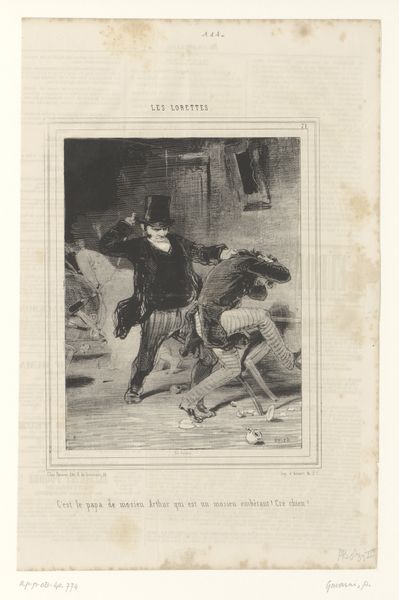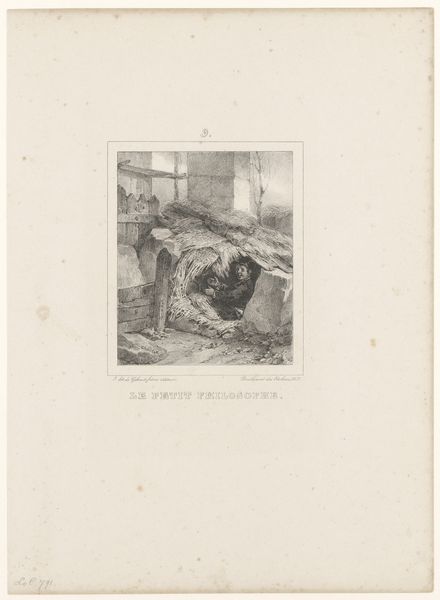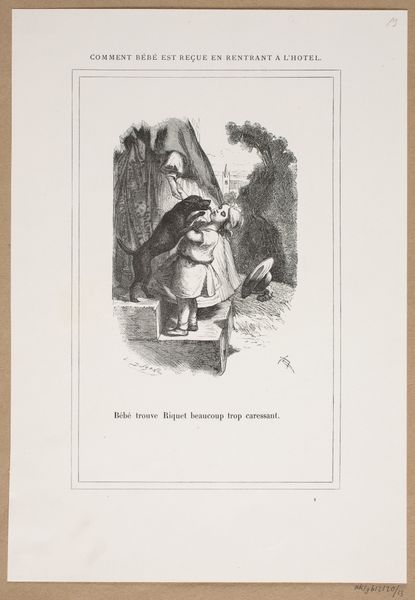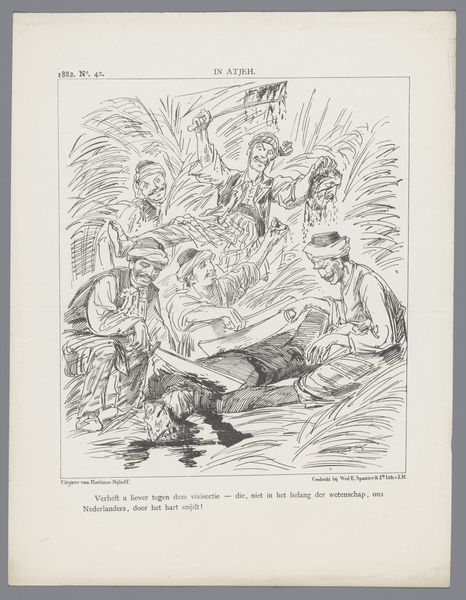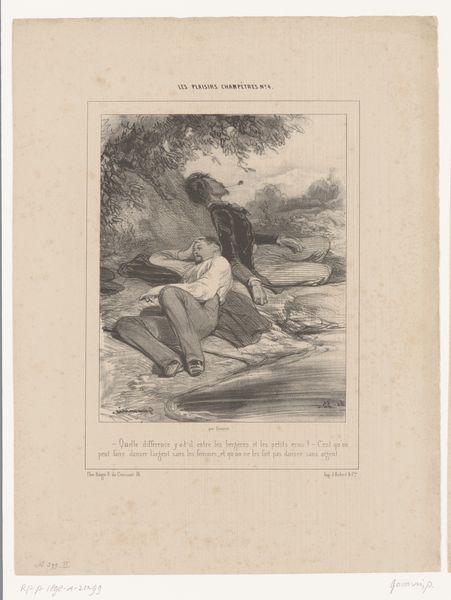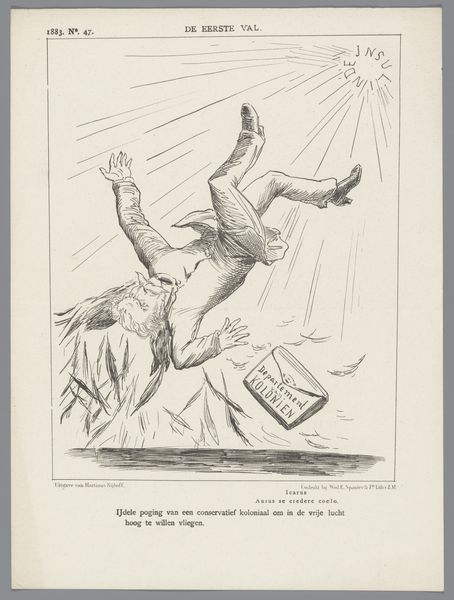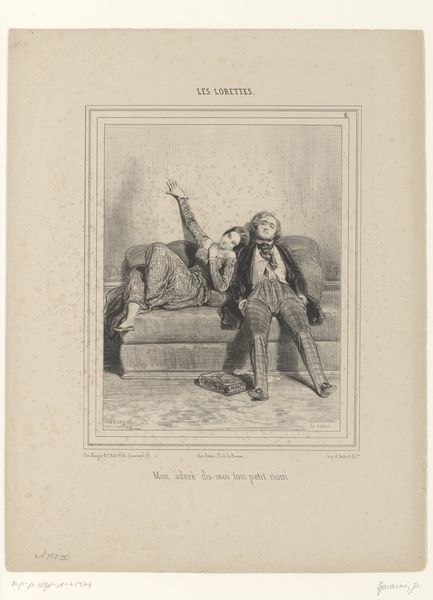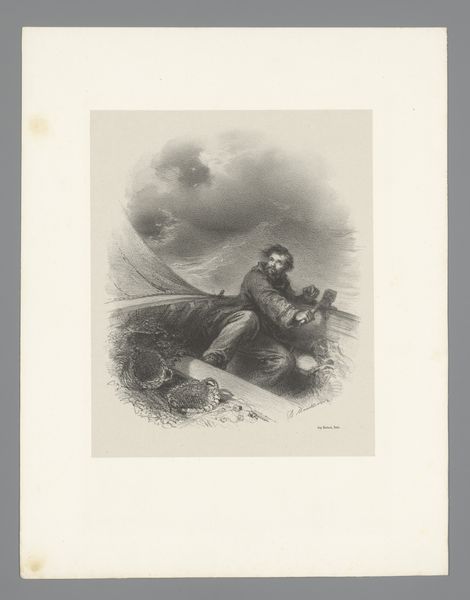
Dimensions: 275 mm (height) x 190 mm (width) (bladmaal)
Curator: Ah, this intriguing print! We are looking at "Bébé au jardin," crafted in 1863 by Lorenz Frølich. It's a pencil and woodcut work currently held at the SMK, Statens Museum for Kunst. Editor: It feels melancholic to me, this garden scene. There's a strange heaviness to the figures. It's romantic but tinged with something a bit sad, maybe? The way the light falls feels muted. Curator: That's perceptive. While ostensibly a genre scene – a glimpse into everyday life – there's an undercurrent that plays on the theme of lost innocence and the weight of adulthood. Note the Romanticism that pervades not only Frølich's broader style but also this narrative. Editor: I see it now. The 'bébé', if you will, seems to be almost forcibly smelling the flower as if some ritual were unfolding. Do you think this heaviness indicates a more mature narrative, using infancy as an allegory? Curator: Precisely! This image speaks to the continuity between the child and the man, bound within the circle of a romanticised cultural narrative. Think of the 'garden' itself— a frequent visual metaphor for childhood wonder or perhaps an Edenic place. Editor: It reminds me of those hazy, childhood memories filtered through adult perception; a sentimental, almost yearning quality. The stark contrast emphasizes the figures' forms but shrouds their inner emotion. Curator: Yes. We often recall memories more starkly, etching them sharply even if details remain obfuscated, lending the work a wistful quality and romantic flair for narrative. Frølich invites us to question not just what we see but how our emotional selves color these recollections. Editor: It’s that kind of print that keeps whispering at you long after you’ve glanced away. I feel compelled to return, you know? Like there’s something just out of grasp. Curator: And that lingering sensation speaks volumes about Frølich's skill in weaving together the nostalgic and the uncanny. It beckons us to consider how personal memories become woven into cultural and universal symbols.
Comments
No comments
Be the first to comment and join the conversation on the ultimate creative platform.
